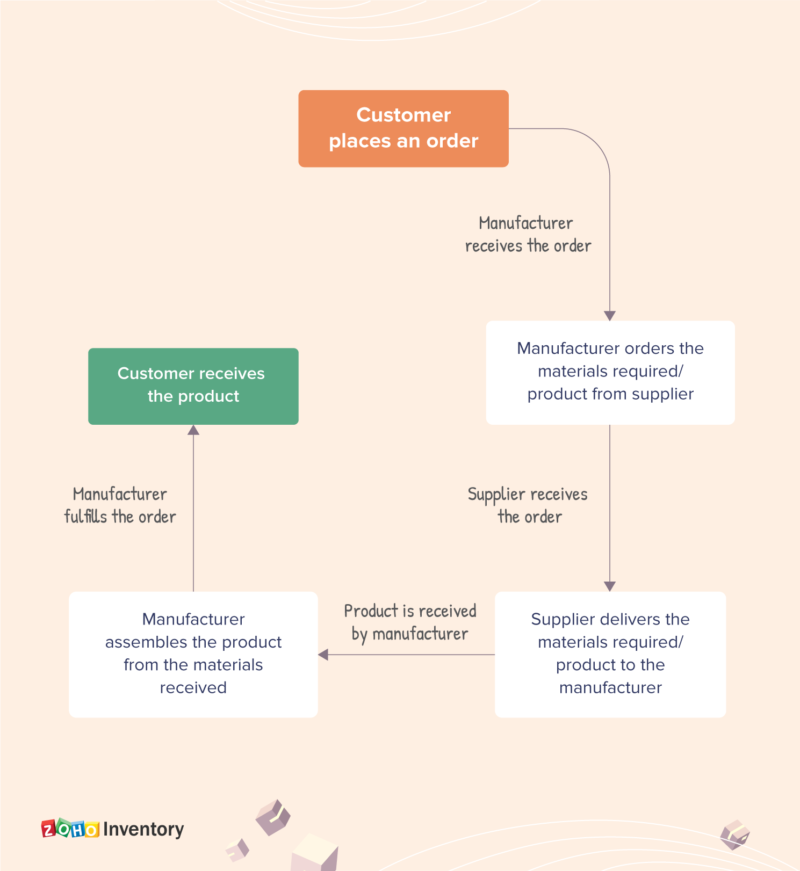What is Just-in-Time (JIT)?
Just-in-time, or JIT, is an inventory management method in which goods are received from suppliers only as they are needed. The main objective of this method is to reduce inventory holding costs and increase inventory turnover.
Importance of just-in-time
Just in time requires carefully planning the entire supply chain and usage of superior software in order to carry out the entire process till delivery, which increases efficiency and eliminates the scope for error as each process is monitored. Here are some of the important effects of a just-in-time inventory management system:
Reduces inventory waste
A just-in-time strategy eliminates overproduction, which happens when the supply of an item in the market exceeds the demand and leads to an accumulation of unsalable inventories. These unsalable products turn into inventory dead stock, which increases waste and consumes inventory space. In a just-in-time system you order only what you need, so there’s no risk of accumulating unusable inventory.
Decreases warehouse holding cost
Warehousing is expensive, and excess inventory can double your holding costs. In a just-in-time system, the warehouse holding costs are kept to a minimum. Because you order only when your customer places an order, your item is already sold before it reaches you, so there is no need to store your items for long. Companies that follow the just-in-time inventory model will be able to reduce the number of items in their warehouses or eliminate warehouses altogether.
Gives the manufacturer more control
In a JIT model, the manufacturer has complete control over the manufacturing process, which works on a demand-pull basis. They can respond to customers’ needs by quickly increasing the production for an in-demand product and reducing the production for slow-moving items. This makes the JIT model flexible and able to cater to ever-changing market needs. For example, Toyota doesn’t purchase raw materials until an order is received. This has allowed the company to keep minimal inventory, thereby reducing its costs and enabling it to quickly adapt to changes in demand without having to worry existing inventory.
Local sourcing
Since just-in-time requires you to start manufacturing only when an order is placed, you need to source your raw materials locally as it will be delivered to your unit much earlier. Also, local sourcing reduces the transportation time and cost which is involved. This in turn provides the need for many complementary businesses to run in parallel thereby improving the employment rates in that particular demographic.
Smaller investments
In a JIT model, only essential stocks are obtained and therefore less working capital is needed for finance procurement. Therefore, because of the less amount of stock held in the inventory, the organization’s return on investment would be high. The Just-in-time models uses the “right first time” concept whose meaning is to carry out the activities right the first time when it’s done, thereby reducing inspection and rework costs. This requires less amount of investment for the company, less money reinvested for rectifying errors and more profit generated out of selling an item.
How does just-in-time work?
The above image shows how a just-in-time model works. First, a customer places an order with the manufacturer. When the manufacturer receives the order, they place an order with their suppliers. The suppliers receive the order and then supply the manufacturer with the materials needed to meet the customer’s order. The raw materials are then received by the manufacturer, assembled, and sold to the customer.
Drawbacks of just-in-time
Even though the just-in-time model saves a lot of costs for businesses that use it, it also has a few drawbacks:
1. Just-in-time makes it very difficult to rework orders, as the inventory is kept to a bare minimum and only based on the customers’ original orders.
2. The model is dependent on suppliers’ performance and timeliness, which are hard to ensure. Additionally, the manufacturer needs to be able to cover any sudden increases in the price of raw materials, since they cannot wait to order during better pricing.
3. Since the JIT model requires a lot of shipping back and forth between the supplier, manufacturer, and customer, it can have detrimental effects on the environment due to over consumption of fossil fuels and packaging.
4. In case of disruptions, a JIT model can have a major impact on the business. Since there is no excess stock to fall back on, sales may come to a halt.
5. A just-in-time system needs to be carefully tracked and organized, which will be hard if you are doing it manually. Softwares should be adopted as it makes the whole process more manageable. Even though a good software help you it can be a bit tricky and/or expensive to adopt a new software system and train your personnel accordingly to use the same.
Therefore, just in time saves you a lot of costs which would otherwise be tied up as inventory holding cost. At the same time just in time should be executed carefully so that your business does not face loss in times of unpredictable events.
 11
11 
nice work
Was very helpful…thank you so much🙏
Was very nice and helpful.. thanks a lot… Keep the good work 👍
Good
Well explained Inventory management method with alot of details to learn frm.
Easy for everyone to understand the idea behind JIT
Very educative. Thanks alot
I learned this in the mid 90’s at a hospital. Being the receiving clerk for the hospital in a big city, with companies such as Owen’s & Minor and Baxter Medical supplies being just 5 to 10 miles away, it was EZ
Marvellous
Was vary helpful and vary effective. Thanks a lot.
This is helpful .Keep up the good work
Helpful